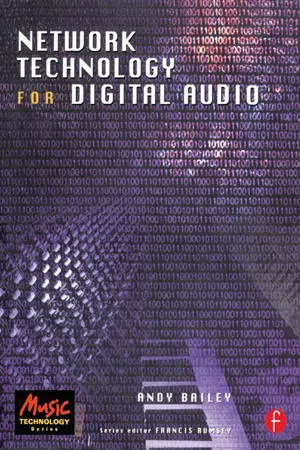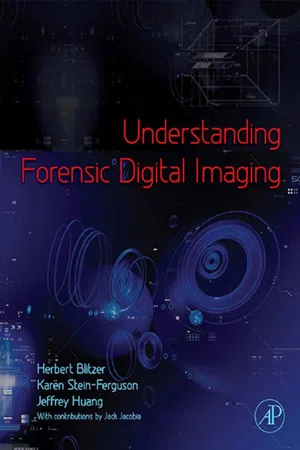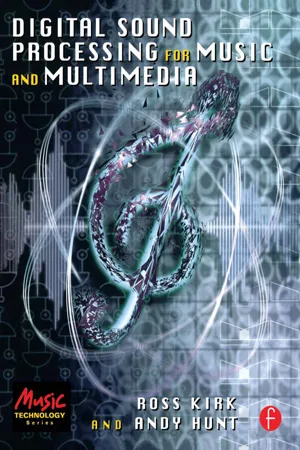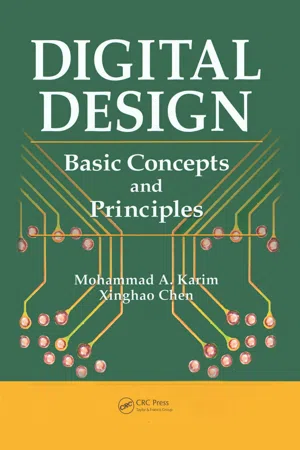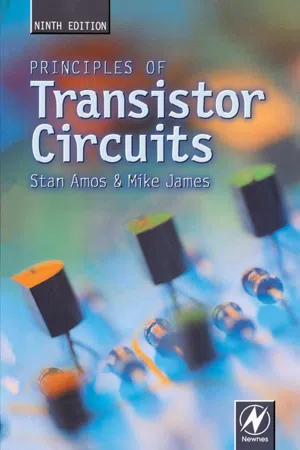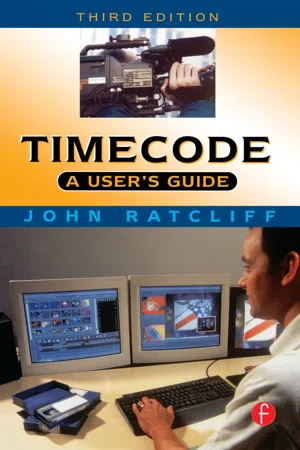Computer Science
Bit
A bit is the smallest unit of data in computing and digital communications. It can have a value of either 0 or 1, representing the binary state of off or on, respectively. Bits are used to encode and process information in digital systems, and they form the basis for representing and manipulating data in computer science.
Written by Perlego with AI-assistance
8 Key excerpts on "Bit"
Learn about this page
Index pages curate the most relevant extracts from our library of academic textbooks. They’ve been created using an in-house natural language model (NLM), each adding context and meaning to key research topics.
- eBook - ePub
Cybercrime and Information Technology
Theory and Practice: The Computer Network Infostructure and Computer Security, Cybersecurity Laws, Internet of Things (IoT), and Mobile Devices
- Alex Alexandrou(Author)
- 2021(Publication Date)
- CRC Press(Publisher)
Figure 1.5 ).FIGURE 1.5 A research to improve the human–computer interface, c1966. MAGIC (Machine for Automatic Graphics Interface to a Computer) Photograph from NIST Digital Archives.Understanding Binary Data
Human languages use characters or symbols, letters and images to signify meaning. These characters are unintelligible to the wires and circuits within the computer. The computer does not act as we do; instead, it stores values as electrical charges. More specifically, when electricity flows through a wire, the electrical signal can be represented as either 1 or 0, True or False, Yes or No, or On or Off. Figure 1.6 demonstrates the binary representation of an image.FIGURE 1.6 The Binary representation of an image.The 0 or 1 is referred to as a Bit (short for binary digit), and is the smallest unit of information. The more electrical connections the computer uses, the more Bits are flowing through its system.While a Bit can represent only a 0 or a 1, a byte, a collection of exactly 8 Bits, represents a unique character. Table 1.1 and Figure 1.7 demonstrate the possible patterns or states of 0s and 1s that can be made from 1, 2, 3 and 4 Bits.TABLE 1.1 Bits and Their Possible PatternsBits Possible Patterns 1 Bit (2 possible values) 0 or 1 2 Bits (4 values) 00 01 10 11 3 Bits (8 values) 000 001 010 011 100 101 110 111 FIGURE 1.7 Bits possible patterns.To be able to represent more than 1 and 0, True/False, Yes/No, or On/Off, we collect 8 Bits to form 1 byte. With 1 byte we can represent and store the numbers between 0 and 255 (28 ). Therefore, a single byte can represent up to 256 different values.By arranging Bits into bytes, any number up to 255 can be represented using only 0s and 1s. Overall, each additional Bit doubles the number of possible patterns (Table 1.2 - eBook - ePub
Electronics Explained
The New Systems Approach to Learning Electronics
- Louis E. Frenzel(Author)
- 2010(Publication Date)
- Newnes(Publisher)
Bits . For example, the 6-Bit number 101101 represents the decimal number 45. Your understanding of how digital circuits, microprocessors, and related equipment process data is tied directly to an understanding of the binary number system.The reason for using binary numbers in digital equipment is the ease with which they can be implemented. The electronic components and circuits used to represent and process binary data must be capable of assuming two discrete states to represent 0 and 1. Examples of two-state components are switches and transistors. When a switch is closed or on, it can represent a binary 1. When the switch is open or off, it can represent a binary 0. A conducting transistor may represent a 1, whereas a cut-off transistor may represent a 0. The representation may also be voltage levels. For example, a binary 1 may be represented by +3.3 V and a binary 0 by 0 V as previously shown in Figure 5.1 .Binary-to-decimal ConversionsThe binary system is similar to the decimal system in that the position of a digit in a number determines its weight. Recall that in the decimal system the weights are powers of 10. The right-most digit is units or 1’s, and then 10’s, 100’s, 1000’s, and so on, moving from right to left from one digit to the next. The position weights of a binary number are powers of 2:20 = 121 = 222 = 423 = 824 = 1625 = 3226 = 6427 = 12828 = 256The position weights of an 8-Bit binary number follow: The most significant digit or Bit (MSB) and the least significant Bit (LSB) are identified. Now let’s evaluate the decimal quantity associated with a given binary number, 101101. You simply multiply each Bit by its position weight and add the values to get the decimal equivalent, 45.You can see that positions with a 0 Bit have no effect on the value. Therefore, they can be ignored. To quickly determine the decimal equivalent of a binary number, simply sum the weights of the positions containing a 1 Bit. For example, in the number 11101, the weights of those positions with a 1 Bit from right to left are 1 + 4 + 8 + 16 = 29. - eBook - ePub
- Andy Bailey(Author)
- 2013(Publication Date)
- Routledge(Publisher)
A single bi-state position (either a 1 or a 0) is called a Bit, from BInary digiTs. Bits are grouped together to form ‘words’. It is common practice in computing to group 8 Bits together to form an 8-Bit word length. An 8-Bit word is called a byte and is something that was settled on through trial-and-error and due to the limitation of early computer designs, and has been around for over fifty years.Eight Bits together can represent any number up to 256 (2 × 2 × 2 × 2 × 2 × 2 × 2 × 2, written as 28 for ease).To make bytes useful for carrying information, various methods have been devised for splitting them up in different ways to represent different things.Figure 1.2 shows two common Bit assignments. The first is into two equal halves, each half being used for a different function. For instance, the leftmost half of the byte may be used to represent a communications channel or address, which is used to identify another device on a network. In this example, the rightmost half represents a function to be performed. In this way, devices at a specific address may perform a certain function, while other devices with different addresses will ignore this instruction. Using this example, it would then be possible to build up a control set for simple devices such as might be used to control a toy car or robotic arm. This split of an 8-byte word into two halves became so common that 4 Bits got its own jargon and is so called a nibble (the amusing principle being that a nibble is half a byte).Figure 1.2 Common Bit assignments. (A) Control data and payload. (B) Most significant Bit (MSB) and least significant Bit (LSB). Bits can be both at the same time.A second common way of looking at bytes, also shown in Figure 1.2 , is to assign an importance to each position and this is not an exclusive way of considering Bits within a byte. This is easy to understand, since all the Bits might appear equal in importance if no other information regarding the information the Bits represent is available. The only exceptions are the two Bits at either end of a transmission or string of Bits, if only because they have only one neighbour and the others have two. As a result these are given different importance and assigned the titles of most significant Bit (MSB) and least significant Bit (LSB). When written down, the MSB is the leftmost Bit, and in mathematical terms has the greatest weight (2(n–1) where n - eBook - ePub
- Herbert L. Blitzer, Karen Stein-Ferguson, Jeffrey Huang(Authors)
- 2010(Publication Date)
- Academic Press(Publisher)
Bit patterns are made by displaying the values for the multiple Bits in sequence. In this simple example where we are using two Bits, the possible Bit patterns are:00: Failed both the written and the driving exams 01: Failed the written but passed the driving 10: Passed the written but failed the driving 11: Passed both the written and the driving examsComputer systems use 1 byte, the Bit pattern with a length of 8 Bits, as the basic information representation. An 8-Bit binary string can represent 28 = 256 different Bit patterns from 0000 0000 = 0 to 1111 1111 = 255 (it is common practice to leave a space between groups of four binary digits each to make it easier to read the numbers). Each pixel in a normal grayscale image takes exactly 1 byte or 8 Bits. Therefore, it can represent 256 different gray levels, starting from value 0 (black) to 255 (white). In general, n Bits can represent 2n binary Bit patterns. Some camera images are represented in 16 Bit pixels, but the principle is the same. Figure 12.1 illustrates how an analog signal is converted to a Bit pattern.FIGURE 12.1 Conversion from an analog signal into a Bit pattern.Binary representation is generally more reliable than analog representation since it has only two values, 0 and 1, and it is easy to distinguish between these even when some noise is mixed into the signal. The result is less error when signal “drifts” are embedded with noise. Figure 12.2 illustrates the digital signal has less degradation than the analog signal, which has signal drifts.FIGURE 12.2 Digital signal (square wave function in green) has less degradation than analog signal (sine wave function in blue). Using digital signal for communication can prevent signal drifts.DATA REPRESENTATION IN DIGITAL SYSTEMS
One important aspect of digital system design is how information ultimately will be converted into a Bit pattern. Numeric values are the most prevalent and natural type of data representation from an analog source. When converting numeric information to binary codes, it is necessary to have a good mapping strategy, so that the data can be well represented relative to how it will be used. Numeric information can be categorized into three data types: - Ross Kirk, Andy Hunt(Authors)
- 2013(Publication Date)
- Routledge(Publisher)
We now have an understanding of the way in which digital audio signals are represented, manipulated and stored. It is therefore appropriate to gain an understanding of the digital machines, particularly the computer, which carry out this processing.In this chapter we will look at the nature of the information handled within computer systems, and at the circuits which deal with, and store this information. These circuits will then form the basis of our understanding of the structure of computer systems, which will be introduced in Chapters 7 and 8 .6.1 Elementary logic and binary systemsAll information in conventional computers is encoded into the binary number system. That is to say that all information and numbers to be processed in the computer are represented by signals which assume one of two possible states. We are very familiar with such binary signals in everyday life. For example a switch takes one of two states — on or off. A light bulb is another example where the states are on or off. In most computer systems the binary states are represented by voltages ‘high’ (about 5 volts) and ‘low’ (about 0 volts). These states are often labelled ‘1’ and ‘0’ respectively.Binary systems also have a long history in logical discourse and argument, where the states are called ‘true’ and ‘false’. Thus the statement that the ‘earth is spherical’ would be assigned the binary state ‘true’. In fact a whole algebra based on these states, known as Boolean algebra, was developed for the analysis of logical debate during the early nineteenth century. Thus the use of binary systems in computers has its roots in a theory developed to serve this logical analysis, and this is why the circuitry used in a computer is still often referred to as ‘binary logic’.There are two main classes of such binary logic: combinatorial (sometimes also called combinational) and sequential logic. In combinatorial logic, the outcome of the system depends only- eBook - ePub
Digital Design
Basic Concepts and Principles
- Mohammad A. Karim, Xinghao Chen(Authors)
- 2017(Publication Date)
- CRC Press(Publisher)
Bit. The large number of Bits present in the binary representation presents no significant problem since in most digital systems most operations occur in parallel.Table 1.1 Correspondence TableThe advantage of using the binary system is that there are many devices that manifest two stable states. Examples of such binary states include on–off, positive–negative, and high–low choices. One of the two stable states can be assigned the value logic 1 while the other can be treated as logic 0 . Bit values are often represented by voltage values. We define a certain range of voltages as logic 1 and another range of voltages as logic 0. A forbidden voltage range typically separates the two permissible ranges. The approximate nominal values used for many technologies are 5 V for a binary value of 1 and 0 V for a binary value of 0. Since there can be numbers represented in different systems, it can be confusing at times. It is thus prudent whenever we are working with a particular number system to use the radix as its subscript. Examples of a few binary numbers and their decimal equivalents are as follows:Similar to what is known as a decimal point in decimal number system, the radix point in a binary number system is called a binary point.1 0 1 11 2= 1 × 1 6 + 1 × 4 + 1 × 2 + 1 × 1 = 231 01 0 1 . 1 1 11 2= 1 × 4 + 1 × 1 + 1 x 0 . 5 + 1 × 0 . 2 5 + 1 × 0 . 1 2 5 + 1 × 0 . 0 6 2 5 = 5 . 9 3 751 01 1 0 0 . 1 0 01 2= 1 × 8 + 1 × 4 + 1 × 0 . 5 + 1 × 0 . 0 6 2 5 = 1 2 . 5 6 251 0Octal (radix 8) and hexadecimal (radix 16) numbers are used primarily as convenient shorthand representations for binary numbers because their radices are powers of 2. Converting a multiBit number to either octal or hexadecimal (hex for short) equivalent thus reduces the need for lengthy indecipherable strings. The octal number system uses digits 0 through 7 of the decimal system. When a position digit exceeds the value represented by the radix, a carry into the next higher position is produced as shown in Table 1.1 . The hexadecimal system, however, supplements the decimal digits 0 through 9 with letters A (equivalent to 10) through F (equivalent to 15). Both upper- and lowercase characters can be used for hex numerals, each representing a distinct value. Like all other positional number systems, when the digit exceeds the radix value at any given digit position, a carry into the next higher-order digit position is produced. We could have used any other universally agreed upon six characters besides A through F. Here, characters A through F do not represent letters of the alphabet but hex numerals. Table 1.2 - eBook - ePub
- S W Amos, Mike James(Authors)
- 2000(Publication Date)
- Newnes(Publisher)
visual display unit or v.d.u.) also used to display the computer output. The data is expressed in alphanumeric symbols and the 256 possible Bit combinations available in a byte are sufficient to represent the upper-case and lower-case letters of two different alphabets, the figures from 0 to 9, punctuation marks and various control codes (such as ‘start a new line’ equivalent to ‘carriage return’ on a typewriter), still leaving combinations for other characters such as graphics (e.g. blocks with various outlines which can be used to make up diagrams). The American Standard Code for Information Interchange (ASCII) relates the Bit arrangement within the byte with the symbol represented. When the arrangement of Bits in a byte is recognised, the character represented is displayed on a v.d.u. as a pattern of dots on adjacent scanning lines.Stores
The shift register is one of a number of types of store needed in a computer. We shall now consider how transistors can be used in other types.Static random access memories (SRAMs)
When a bistable is triggered from one state to the other, the collector (or drain) voltage switches from a low value (for the ‘on’ transistor) to a high value (for the ‘off’ transistor). If these two voltage values are taken as logic levels a trigger can be said to cause one collector voltage to take up its 1-state. Moreover this state will persist indefinitely if no further triggers are received. In other words the bistable is capable of storing one binary digit. A group of 8 bistables can thus store a byte.To achieve the storage capacity required in a digital computer, bistables are needed by the thousand and are available in the form of i.cs. Early storage i.cs held only 1,000 bistables but as technology improved and greater miniaturisation became possible, the capacity of the i.cs increased to 64,000 bistables (and more recently much greater than this). The bistables are usually m.o.s. types which are more economical of power than bipolar transistors, requiring no base current to hold them in the conductive state. The bistables are arranged in a rectangular array or matrix with leads from every row and column. A 16-kBit i.c., for example, may have 128 rows and 128 columns. A wanted bistable can be switched by signals applied to the appropriate horizontal and vertical leads. At each lead intersection there are, in addition to the bistable itself, up to four other transistors, the whole forming a group known as a memory cell . Fig. 15.25 - eBook - ePub
Timecode A User's Guide
A user's guide
- J. Ratcliff(Author)
- 1999(Publication Date)
- Routledge(Publisher)
Table 2.2 . Firstly, each Bit has a 'weighted' value which is determined by its position in the Bit sequence. Secondly, the binary 'word' always contains the same number of Bits, even if the leading Bits are all set at zero. Thirdly, there is a maximum length to the word length, set at the design stage. Lastly, there is a minimum resolution (in this case 1 g) also set at the design stage. It is not the case, as with analogue systems, of how accurately the numbers can be read — they are present, or not present, unambiguously in the word. If higher resolution is required (or indeed if higher values than those obtainable with the set word length are required) then an extra Bit will need to be added at oneTable 2.2 Digits having weighted values can signal a range of discrete values.Weighted binary Bit values Denary values 8 4 2 1 0 0 0 0 0 1 0 0 0 1 2 0 0 1 0 3 0 0 1 1 4 0 1 0 0 5 0 1 0 1 6 0 1 1 0 7 0 1 1 1 8 1 0 0 0 9 1 0 0 1 10 1 0 1 0 11 1 0 1 1 12 1 1 0 0 13 1 1 0 1 14 1 1 1 0 15 1 1 1 1 or other end of the word, which will require a complete system redesign. In a binary system, a digital word n Bits long can represent values in the range 0 to 2n -1.Commonly, microprocessors (found in edit controllers, timecode generators and timebase correctors) and digital communications systems deal in digital words eight Bits long. Such groupings of eight Bits are known as 'bytes'. The weighted values are as follows:If all the Bits are set to 1 the equivalent denary value is:128+64+ 32+ 16+ 8+ 4+ 2+ 1 =255Therefore, using a word 1 byte (8 Bits) long enables all values between 0 and 255 to be identified. In this manner a range of alphanumeric and control codes can be incorporated within a single byte of digital Bits.To summarize: a word of digital Bits can be used either to represent quantities (e.g. of time) by the use of weighted digits, or each combination of zeros and ones in the code can be used to represent an alphanumeric symbol or an instruction. In both cases the word length and range of values is set at the design stage.


